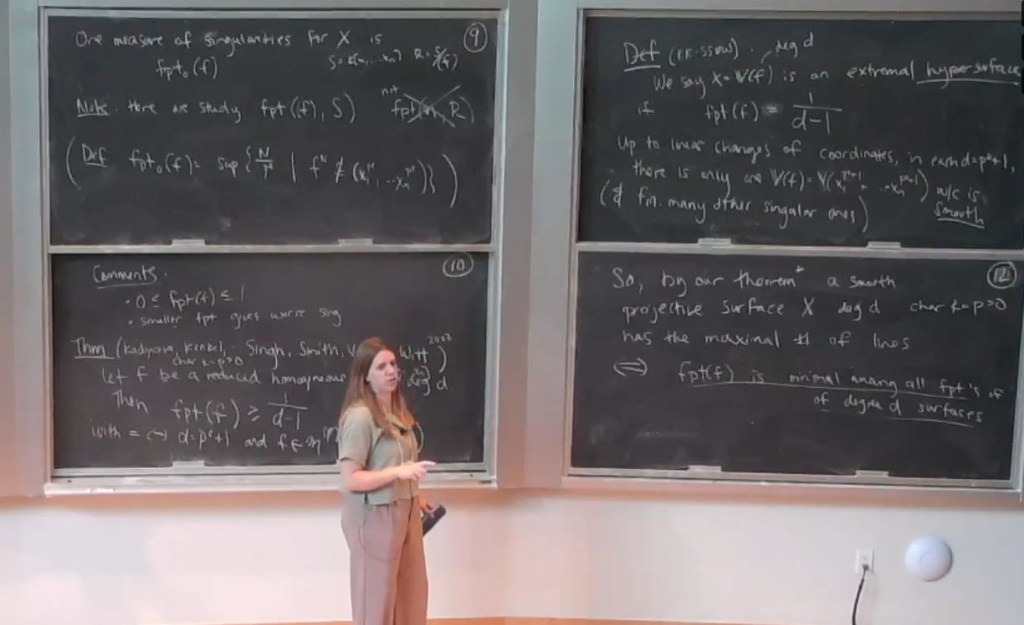Recent Developments in Commutative Algebra: "Extremal Surfaces in Positive Characteristic"
Presenter
April 17, 2024
Keywords:
- Commutative rings
- modules
- ideals
- mixed characteristic
- Frobenius powers
- test ideals
- tight closure
- perfectoid methods
- singularities
- birational algebraic geometry
- multiplier ideals
- symbolic powers
- syzygies
- free resolutions
- homological methods
- derived categories
- polynomials
- monomial ideals
- toric varieties
- Schubert varieties
- combinatorial commutative algebra
- equivariant ideals
- maximal Cohen-Macaulay modules
- applications of representation theory
- twisted commutative algebras
- D-modules
- local cohomology
- computational commutative algebra
MSC:
- 05Exx - Algebraic combinatorics
- 11Sxx - Algebraic number theory: local fields
- 11Txx - Finite fields and commutative rings (number-theoretic aspects)
- 13-XX - Commutative algebra
- 14-XX - Algebraic geometry
- 16Exx - Homological methods in associative algebras {For commutative rings
- see \newline 13Dxx
- for general categories
- see 18Gxx}
- 18Gxx - Homological algebra in category theory
- derived categories and functors [See also 13Dxx
- 16Exx
- 20Jxx
- 55Nxx
- 55Uxx
- 57Txx]
- 19Axx - Grothendieck groups and $K_0$K_0 [See also 13D15
- 18F30]
- 19Lxx - Topological $K$K-theory [See also 55N15
- 55R50
- 55S25]
- 20Jxx - Connections of group theory with homological algebra and category theory
Abstract
What is the most singular possible point on any variety in positive characteristic? In joint work with coauthors, we gave a precise answer to this question for hypersurfaces using a measure of singularity called the F-pure threshold, and we called these “most singular” hypersurfaces extremal hypersurfaces. These special hypersurfaces only occur in degrees $d=p^e+1$, where $p$ is the characteristic. In each degree where they occur, there is one particular extremal hypersurface (up to a change of variables) which stands out—it is the cone over a smooth projective hypersurface. In this talk, we’ll focus on this special hypersurface in the 4-variable case—that is, we’ll focus on an extremal hypersurface which is the cone over a smooth projective surface, and we’ll discuss some of its surprising geometric properties. In particular, we highlight a conjecture which further justifies the name “extremal,” which would answer a longstanding classical question about smooth projective surfaces of any degree.
